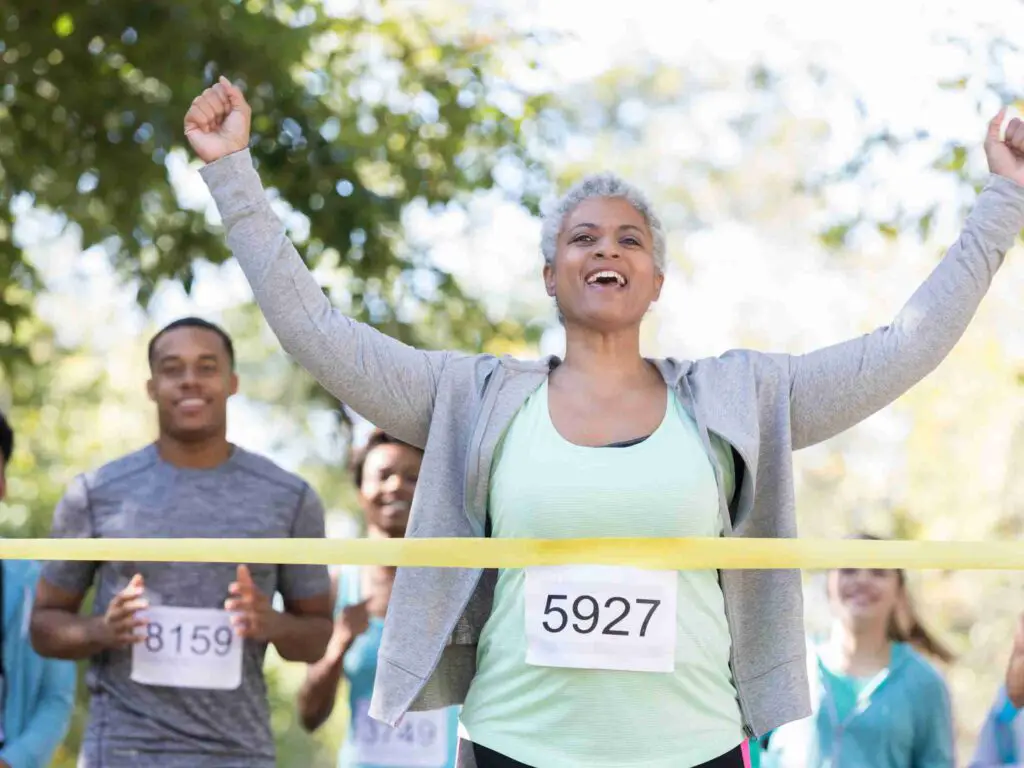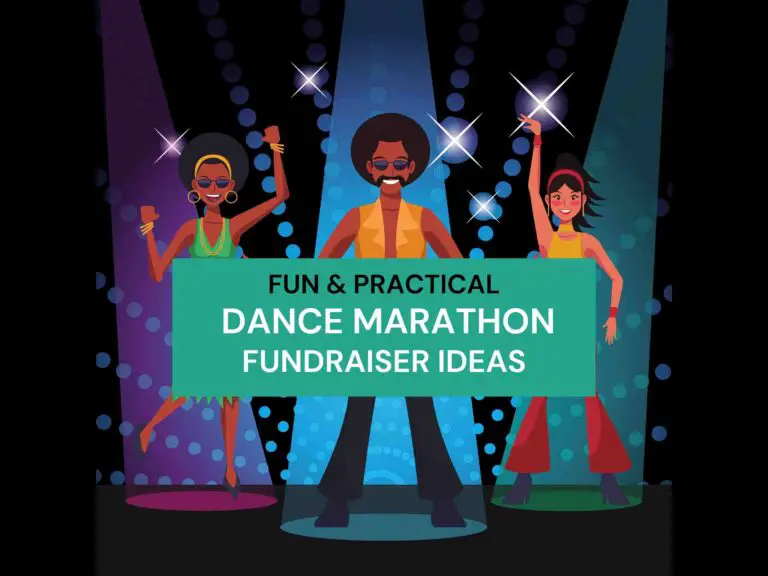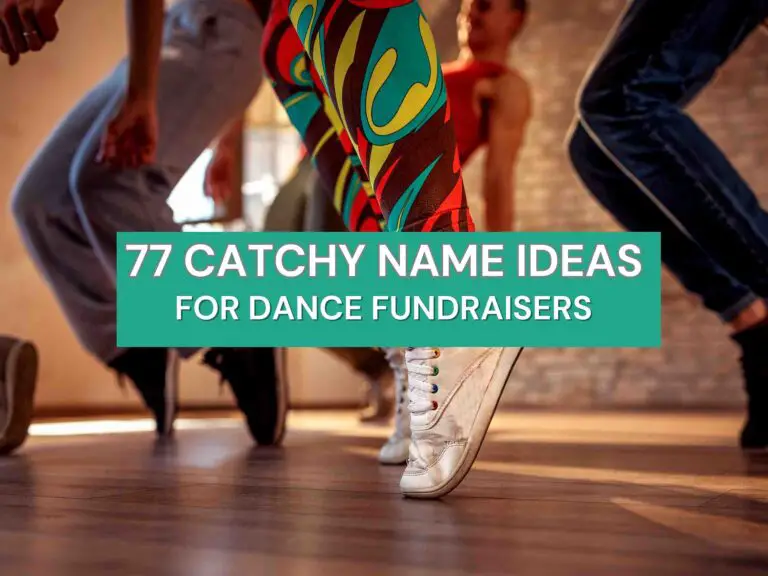How Does Marathon Fundraising Work? Full Details + Pro Tips
This post may contain affiliate links. If you purchase through one of these links, I may receive a small commission at no extra cost to you. As an Amazon Associate, I earn from qualifying purchases.


“How Does Marathon Fundraising Work?” If this question resonates with you, you’re not alone. With the rising popularity of combining physical activity with charitable causes, many find themselves intrigued by the synergy of marathon fundraising. Yet, while the concept might seem straightforward, the intricacies of organizing, promoting, and maximizing funds through such events remain elusive to many.
In this article, we aim to unravel these complexities, providing you with a clear roadmap of marathon fundraising’s ins and outs. By the end, you’ll understand the driving factors behind its rising popularity, the steps to initiate your marathon fundraiser, and innovative strategies to ensure its success.
So how does marathon fundraising work? Stay with us as we dive deep into this guide, addressing this question comprehensively to empower your marathon fundraising journey.
How Does Marathon Fundraising Work?
Marathon fundraising channels athletic enthusiasm into philanthropy through entry fees, participant pledges, corporate partnerships, and extended activities such as merchandise sales and events.

In other words, the financial backbone of fundraising marathons is multifaceted and comes from various sources like
- Entry Fees: A segment of the registration or entry fees often directly benefits the associated cause or charity.
- Pledges and Sponsorships: Participants frequently secure pledges based on their performance metrics. For instance, a donor might pledge a specific sum for every mile completed. Major events like the Boston Marathon have seen participants raise thousands through such pledges.
- Corporate Partnerships: Businesses often partner with these events, offering substantial donations or matching pledges. In fact, marathons are one of the best big-money fundraising ideas that are capable of raising a substantial amount of money for your cause.
They gain exposure through branding opportunities, aligning their brand with philanthropy. The New York City Marathon’s association with Tata Consultancy Services (TCS) stands as a testament to successful corporate partnerships. - Merchandise and Ancillary Events: The sale of marathon-themed merchandise or hosting pre-race events, like carbo-loading dinners or auctions, can generate additional funds for the cause.
Why has marathon fundraising surged in popularity?
The last decade has seen a massive rise in charity runs and marathon fundraisers. From half marathons to 5k and 10k fun runs, events along the lines of marathons and races have contributed immensely to various philanthropic causes. The various reasons for the growth in the popularity of marathon fundraisers and charity runs are
Physical Challenge Meets Philanthropy: In marathon fundraising events, runners experience the dual thrill of pushing their athletic limits and championing a charitable mission. This blend of endurance and altruism drives higher participation in these fundraising races.
Community Building: Marathon fundraising events serve as a nexus for community engagement. Whether it’s individuals forming training squads or local businesses offering support, such events knit people together under a collective marathon fundraising goal, fostering camaraderie.
Broadened Participation: Fundraising marathons break down the barriers of elite racing, inviting a spectrum of runners. By welcoming both seasoned marathoners and novices, these events maximize their fundraising outreach and amplify the impact on the chosen cause.
Visibility and Awareness: Marathon fundraising doesn’t just accumulate funds; it amplifies the voice of causes. Events like the Race for the Cure not only gather donations but also play a pivotal role in raising awareness, making marathon fundraising a powerful tool for advocacy.
How to Start a Marathon Fundraiser For Maximum Success

So now that you’ve clarity on how marathon fundraisers work and why they are so popular, let’s look at how to start a marathon fundraiser for maximum success. Here’s a step-by-step breakdown of the process. Whether you are a seasoned non-profit or a newbie in the space of organizing philanthropic events, use these steps as a base for your charity run’s planning and organization.
1. Define the Objective
Clearly outline the purpose of your marathon fundraiser. Is it to support a specific cause, fund a project, or aid a community?
Your objective becomes the anchor point, guiding every subsequent decision. It not only helps set clear expectations but also resonates with potential participants and donors. Tailoring your marketing strategy to highlight the cause can drastically increase registrations and donations and enhance the fundraiser’s overall impact.
Look at the example of Susan G. Komen’s race – the largest charity marathon event for breast cancer. The event organizers highlight the cause of running a race for their marathon in all of their marketing material, their website, the names of the race as well as the running gear provided. Anyone who is deeply passionate about supporting the cause of breast cancer would immediately get drawn to the fundraising marathons conducted by this organization and derive immense satisfaction from participating in their charity-run races.
2. Secure a Location and Date
The New York City Marathon is iconic, not just for its competitive spirit, but its scenic route that spans all five boroughs.
So along those lines, research and finalizing a location that aligns with your objective and is accessible to a majority of your participants. Local parks, city streets, or even school tracks can make for excellent marathon routes. However, always ensure that required permissions and licenses are in place before promoting the event.
The date plays a pivotal role too. It must avoid clashes with major local events or holidays, which could diminish turnout. Consider factors like weather, accessibility, and local support while deciding the venue.
3. Budget and Financial Goals
Establish a clear budget that encompasses all potential costs – from permits and licenses to promotional materials and refreshments.
Once the budget stands firm, set a fundraising goal.
This goal not only guides the event’s scale but also motivates participants and sponsors. Integrating tools like marathon fundraising software can streamline costs, track progress, and facilitate smooth donations. Some software that you could use when planning a marathon fundraising event are:
Classy – A comprehensive fundraising platform that allows non-profits to create custom fundraising pages for marathons, track donations, and analyze campaign performance. Some other similar fundraising platforms that could be set up for marathon events are DonorDrive, CauseVox, FirstGiving, etc.
RunSignup – This user-friendly software works as a race wizard and enables effortless event setup in minutes. Benefit from a complimentary race website, email platform, fundraising tools, and a convenient RaceDay CheckIn App.
4. Promote and Market
Harness the power of both digital and traditional channels to maximize the event’s visibility. Social media, email campaigns, and partnerships with local businesses can elevate awareness. Also, to boost community engagement, make sure you are not only promoting the event and its updates. Share wins from participants, participant stories etc. Just like the Chicago Marathon event, keep the social media handles and emails active all round the year to stay relevant and keep your supporters warmed up before the event.
While digital strategies dominate modern promotion, do not underestimate the value of posters, flyers, or word-of-mouth within local communities. Regular updates about the event, highlighting the objective and key milestones, can foster excitement and anticipation.
5. Registration and Participant Kits
Streamline participant registrations with easy-to-navigate online platforms or apps. Offer diverse registration categories – individual, teams, or different distance categories.
After successful registration, provide participants with a kit. This kit, comprising bib numbers, event details, and perhaps some merchandise (like T-shirts with logos), not only offers logistical clarity but also creates a sense of belonging and excitement.
Moreover, incorporate marathon tips or training guides as part of communication to engage registrants in the lead-up to the event. As stated in the previous point, don’t just activate your communication prior to the event – but treat it like a living entity that connects with participants and enthusiasts all throughout the year.
6. Coordinate Volunteers and Amenities
Volunteers remain the backbone of any marathon fundraiser. Rally a dedicated team, providing them with clarity on roles – from registration desks to water stations. Do not underestimate the number of volunteers you need to successfully execute a charity run or a fundraiser marathon. For example – a typical RunDisney Marathon race season employs roughly 15,000 volunteers.
So even if you are not operating at a scale as large as some of the leading marathons in the world, always aim to enroll 1.2-1.5 times the volunteers you estimate you need.
Alongside a strong volunteer base, ensure participants’ comfort and safety. Amenities such as hydration stations, first-aid booths, and clear signages become paramount. Partner with local businesses for some of these amenities. Partnerships with large corporations for allied assistance can act as both a cost-saving measure, and an opportunity for local engagement and wider outreach.
7. Post-Event Follow-up and Communication
Once the marathon concludes, it doesn’t end there. Thank participants, donors, and volunteers for their dedication and contributions.
Send out a concise report highlighting achievements, funds raised, and how those funds will be utilized. Such transparency builds trust and sets a positive precedent for future events.
Some other ways in which you can stay in touch with your supporters after the event is through
– year round communication in the form of newsletters, social media posts (as stated above)
– support in the form of marathon training camps and preparation tips
– individual running challenges, etc.
Fundraising for Marathons and Charity Runs – FAQs
Now that you know exactly how marathon fundraisers work, let’s answer some frequently asked questions associated with marathon fundraisers.
How do you fundraise while running?
Fundraising during marathon training or running a race involves securing pledges per mile run or soliciting flat donations. You could also use online fundraising platforms to manage and promote fundraising charity runs.
How to ask for donations for a marathon?
When soliciting donations for marathon fundraising, be clear about the cause, your commitment, and the impact of potential donations. Personalize your appeal and share your journey on social media platforms for better engagement.
What happens if you don’t raise enough money for a marathon?
Many marathons set fundraising goals to allow participation to a marathon. But even if you don’t meet these goals, you may still be encouraged to participate. However, for certain events with strict fundraising commitments, personal fulfilment of the remaining amount may be required.
Can businesses sponsor marathon fundraisers?
Businesses and corporates often sponsor fundraising marathons, offering financial aid, matching employee donations or providing in-kind services, enhancing the event’s fundraising potential and their brand visibility.
Are donations to marathon fundraisers tax-deductible?
Typically, donations made to charity through fundraising marathons are tax-deductible. However, it’s essential to verify the non-profit status of the benefiting organization and consult with a tax advisor for accurate information.


